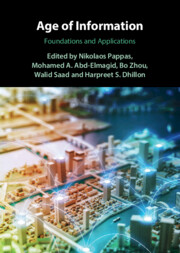Age of Information in Practice
Chapter 12, titled “Age of Information in Practice“, in the book Age of Information: Foundations and Applications, published by Cambridge University Press, , provides a comprehensive examination of the practical aspects of implementing and measuring the Age of Information (AoI) metric in real-world networks. While AoI has been extensively studied in theoretical contexts, this chapter bridges the gap by focusing on empirical studies and experimental testbeds that highlight the challenges and considerations of applying AoI in practical scenarios.

Foundations and Applications [Cambridge University Press]
The authors, Elif Uysal, Onur Kaya, Sajjad Baghaee, and Hasan Burhan Beytur, compile recent works that report on AoI measurements across various network configurations. They delve into critical practical issues such as synchronization challenges, the role of different transport layer protocols, congestion control mechanisms, the application of machine learning for network adaptation, and device-related constraints like limited processing power. These factors are crucial in understanding how to effectively manage and optimize AoI in operational networks.
A significant portion of the chapter is dedicated to discussing the necessity of age-optimal service policies, especially in the context of machine-type communications where data freshness is paramount. The authors emphasize that achieving low AoI often aligns with attaining high throughput, suggesting that effective AoI management can lead to improved network performance in terms of timely data delivery and reduced delays.
This chapter serves as a valuable resource for researchers and practitioners aiming to translate theoretical AoI concepts into practical network solutions, offering insights into the complexities and strategies of managing information freshness in real-world applications.
